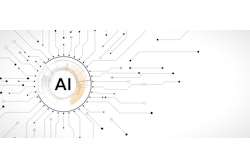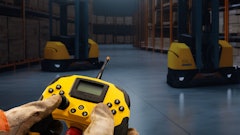
The contract packagers (CPs) and contract manufacturers (CMs) industry is expected to grow, according to a 2024 study by PMMI, The Association for Packaging and Processing Technologies. In fact, 67% of brand owners participating in PMMI’s 2024 Contract Packaging & Manufacturing: Drivers of Machinery Investments study plan to maintain or increase their current use of CP/CM services in the next few years.
To keep up, 87% of CPs/CMs surveyed state they intend to add new equipment over the next three years However, these third-party service providers face challenges: labor shortages, the timely delivery of supplies and new equipment, and the management of throughput and scheduling.
Productivity is a top priority in any manufacturing environment, typically followed by cost. Today’s savvy manufacturers are automating not only to solve production issues but also to ease the pain of labor shortages. Another PMMI report, 2025 Performance Optimization: Insights for Packaging Line Readiness, concluded that three distinct yet interconnected phases create an environment of operational readiness. The phases are:
· Vertical startups (productivity)
· Operator training (workforce)
· IT-OT integration (automation)
Vertical startups focus on optimizing processes and workflows to ensure a swift transition to full production, particularly how to avoid a post-startup performance dip. Key priorities include early communication and collaboration with original equipment manufacturers (OEMs), workforce preparedness, and optimizing planning.
Optimizing machinery usability is the most effective way for OEMs to help end users avoid the dip, with 66% of participants in the PMMI study advocating for more instructive, intuitive human/machine interfaces (HMIs) to aid troubleshooting. The second-highest rated suggestion (41%) calls for comprehensive equipment documentation and training, while methods to assess operators’ understanding and training effectiveness ranked third.
The operator training phase explores ensuring operators have the knowledge and resources available to perform their roles. This phase emphasizes the importance of designing training programs around the workforce's needs and adopting a people-centric approach. Key elements include using technology to improve training, enhancing the skills of trainers, and providing regular, hands-on training.
The timing of this training is crucial. Hands-on, structured training well in advance of vertical startups is key to maximizing performance efficiency and ensuring operators are ready. Technology to support training and improve information retention should include videos, interactive manuals, augmented reality, and tablet-based instructions. In addition, OEMs should simplify machinery design and provide HMIs that are user-friendly and intuitive to accommodate operators with varying skill levels.
The IT-OT integration phase ensures that machines are operated effectively and production is optimized through real-time, actionable data insights. Successful IT-OT integration is essential for end users aiming for efficiency, scalability, and cybersecurity, but it comes with challenges. Specifically, it requires early collaboration between IT, OT, engineering, and OEMs to avoid costly delays and compatibility issues.
By prioritizing real-time data visibility, secure infrastructure, and early stakeholder involvement, organizations can achieve seamless IT-OT integration, future-proof operations, and avoid costly setbacks. However, 2025 Top to Top attendees reported that a key challenge in IT-OT integration is justifying the investment. End users must balance short-term, tangible benefits, such as cost savings, reduced downtime, and immediate ROI, with long-term advantages, including a scalable, future-proof solution that enhances automation, provides real-time insights, and optimizes production processes.
Success depends on strong OEM and supplier relationships
According to the 2024 Contract Packaging & Manufacturing study, CP/CM organizations must be flexible and versatile operations capable of handling numerous different product formulations and packaging formats. This means CP/CM organizations need OEM and supplier partners who focus on offering equipment that can handle a wide variety of different product and packaging parameters.
These operations also require a higher level of digitally integrated processes – from data management to automating physical processes like changeovers, managing complex production schedules, and maintaining machine uptime.
CP/CM organizations also need to adopt technology-focused solutions, such as AI-supported processes and data-driven decision-making, to stand out in the marketplace. Since these technology-focused solutions quickly become standard in manufacturing, CP/CM organizations must implement new strategies to stay competitive. In many cases, early adoption of new technology and new capabilities can be a defining characteristic of any successful CP/CM.
Operational integration is a crucial tool for CPs/CMs to drive efficiency in their own facilities, as well. This integration includes both digital processes (like data collection and management) and physical processes (like physically automated machinery). Furthermore, CP/CM organizations need to pursue ever-higher levels of integration to:
· Enable the adoption of more automated processes for production and packaging.
· Expand the level of available operational data to make more data-driven decisions that increase efficiency and mitigate risk.
· Ease the burden of regulatory compliance and reporting.
· Enhance coordination with brand-owner clients by extending connectivity outside the plant.
Harnessing the power of AI
Another tool for CPs/CMs, AI, is more of an evolution than a revolution, according to PMMI’s 2024 The AI Advantage in Equipment: Boosting Performance and Bridging Skills Gaps study. As of now, the technology is not at the level where tasks can be completed solely by AI, so a human is still required to make the final decisions.
The three key impacts that currently available AI solutions will have on the packaging industry are:
· Increased staff productivity
· Improved machine performance and overall equipment effectiveness (OEE)
· Mitigation of skills gaps and labor issues.
One key advantage of AI is it enables staff to be much more efficient and productive with their time. AI assistants have the most potential to improve this metric. With them, time-consuming tasks, such as data entry and coding, can be totally automated, increasing the speed at which these functions and projects can be completed, freeing up additional time for personnel to focus on other tasks.
AI technology also increases both machine performance and the OEE of automated technologies. For example, integrating AI into machine vision systems improves the success rate of decision-making in processes, such as quality inspection, and allows a wider range of complex tasks to be completed, while machine builders can use digital twin simulations to optimize key machine metrics, such as throughput, which can significantly improve machine performance.
Predictive maintenance is another tool that vastly reduces the frequency of machine downtime. When combined with improved training from connected worker platforms, it can significantly impact a machine’s OEE.
The final major impact AI will have on the packaging industry is mitigating the skills gaps. The optimized training provided in connected worker platforms can reduce these gaps by ensuring that all employees receive the highest-quality training. For instance, AI assistants and generative AI predictive maintenance solutions allow users to ask questions regarding issues, further enabling staff members to upskill independently and reduce the risk of human error.
Due to the nature of AI models, the longer these technologies are used and the more data they process, the better the outputs become. However, integrating AI technologies into your company is not a one-time improvement like previous automation technologies; continuous improvement is seen in key metrics.
To begin your AI journey, the following are important considerations:
· Have a clear plan of what you want to achieve.
· Collect and store relevant data.
· Speak with an AI company early.
· Start with small, achievable projects.
· Don’t assume AI is a fix-all solution.
AI-driven tools are proving invaluable in boosting staff productivity, enhancing machine performance, and OEE, and addressing workforce skills gaps. Despite initial barriers, such as cybersecurity concerns, data collection and storage challenges, and resistance from older generations, the advantages that AI provides to the industry are clear.



















